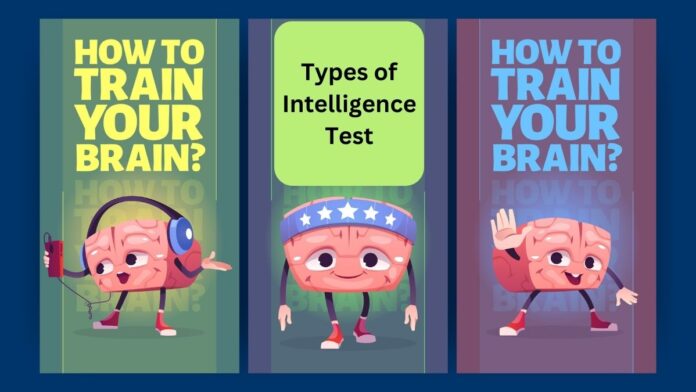
Do you really want to know about the various Different Types of Intelligence Tests in easy words? then you are on the right post.
Actually Intelligence is a complex concept that is difficult to define and measure. It is a combination of cognitive abilities, including reasoning, problem-solving, memory, and perception.
To assess intelligence, various intelligence tests have been developed over the years, each with a unique focus and methodology. In this article, we will explore the different Types of Intelligence Tests including the Wechsler Individual Achievement Test, Woodcock-Johnson III Test of Cognitive Disabilities, Wechsler Adult Intelligence Scale, Stanford-Binet Intelligence Scale, Peabody Individual Achievement Test, Universal Nonverbal Intelligence, Differential Ability Scales.
Wechsler Individual Achievement Test (WIAT)
The Wechsler Individual Achievement Test (WIAT) is a standardized type of intelligence test that measures academic skills in individuals from 4 to 85 years of age. It assesses areas such as reading, math, written language, and oral language. WIAT is commonly used to evaluate the learning difficulties of children and to identify strengths and weaknesses in their academic performance.
Woodcock-Johnson III Tests of Cognitive Disabilities (WJ III)
The Woodcock-Johnson III Tests of Cognitive Disabilities (WJ III) is a comprehensive battery of tests that measure cognitive abilities and academic skills in individuals from 2 to 90 years of age. It assesses areas such as memory, reasoning, problem-solving, and academic skills. WJ III is commonly used to diagnose learning disabilities, determine a child’s eligibility for special education services, and to track their progress over time.
Wechsler Adult Intelligence Scale (WAIS)
The Wechsler Adult Intelligence Scale (WAIS) is a standardized type of intelligence test that measures cognitive abilities in individuals aged 16 years and above. It assesses areas such as verbal comprehension, perceptual reasoning, working memory, and processing speed. WAIS is commonly used to diagnose intellectual disability and to evaluate the cognitive abilities of individuals for various reasons, such as for employment or educational planning.
Stanford-Binet Intelligence Scale
The Stanford-Binet Intelligence Scale is a standardized test type of intelligence test that measures intelligence in individuals aged 2 to adults. It assesses cognitive abilities such as verbal reasoning, abstract reasoning, spatial perception, and memory. The Stanford-Binet Intelligence Scale is commonly used to diagnose an intellectual disability, evaluate the cognitive abilities of individuals for educational or employment purposes, and to identify individuals who may benefit from educational or therapeutic interventions.
Peabody Individual Achievement Test (PIAT)
The Peabody Individual Achievement Test (PIAT) is a standardized test type of intelligence test that measures academic skills in individuals from 2 to 22 years of age. It assesses areas such as reading, math, written language, and oral language. PIAT is commonly used to evaluate the learning difficulties of children, to identify strengths and weaknesses in their academic performance, and to track their progress over time.
Universal Nonverbal Intelligence Test (UNIT)
The Universal Nonverbal Intelligence Test (UNIT) is a standardized type of intelligence test that measures cognitive abilities in individuals who are unable to communicate verbally. It assesses abilities such as spatial perception, memory, and reasoning through the use of nonverbal cues, such as pointing and gestures. UNIT is commonly used to evaluate the cognitive abilities of individuals with severe speech or language impairments, such as those with autism or cerebral palsy.
Differential Ability Scales (DAS)
The Differential Ability Scale (DAS) is a standardized type of intelligence test that measures cognitive abilities in individuals from 2 to 25 years of age. It assesses areas such as verbal reasoning, nonverbal reasoning, memory, and spatial perception. The DAS is commonly used to diagnose learning disabilities, determine a child’s eligibility for special education services, and to track their progress over time.
Frequently Asked Questions on Types of Intelligence Tests
Q: What is the difference between the Wechsler Individual Achievement Test (WIAT) and the Wechsler Adult Intelligence Scale (WAIS)?
A: The Wechsler Individual Achievement Test (WIAT) measures academic skills in individuals from 4 to 85 years of age, while the Wechsler Adult Intelligence Scale (WAIS) measures cognitive abilities in individuals aged 16 years and above. WIAT assesses areas such as reading, math, written language, and oral language, while WAIS assesses areas such as verbal comprehension, perceptual reasoning, working memory, and processing speed.
Q: Can the Woodcock-Johnson III Tests of Cognitive Disabilities (WJ III) be used to diagnose intellectual disability?
A: Yes, the Woodcock-Johnson III Tests of Cognitive Disabilities (WJ III) can be used to diagnose the intellectual disability. However, it is important to keep in mind that WJ III is a comprehensive battery of tests that measure cognitive abilities and academic skills, and is not limited to just the diagnosis of intellectual disability.
Q: Can the Universal Nonverbal Intelligence Test (UNIT) be used to evaluate the cognitive abilities of individuals with normal speech and language abilities?
A: No, the Universal Nonverbal Intelligence Test (UNIT) is specifically designed for individuals who are unable to communicate verbally and assesses cognitive abilities through nonverbal cues. It is not intended for individuals with normal speech and language abilities.
Conclusion (Types of Intelligence Tests)
Intelligence is a complex concept that is difficult to define and measure, and various intelligence tests have been developed over the years to assess it. Each test has a unique focus and methodology and is designed for a specific population or purpose. Some of the common Types of Intelligence Tests include the Wechsler Individual Achievement Test, Woodcock-Johnson III Tests of Cognitive Disabilities, Wechsler Adult Intelligence Scale, Stanford-Binet Intelligence Scale, Peabody Individual Achievement Test, Universal Nonverbal Intelligence, and Differential Ability Scales. It is important to understand the differences between these tests and the populations they are designed for in order to make informed decisions about assessing intelligence.



